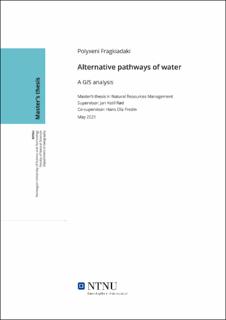| dc.description.abstract | Extreme weather events and natural disasters can lead to destructive consequences when they interact with the natural and human environments. Increased frequency and more severe floods are posing a threat to humans, communities and infrastructure. In the coming decades, it is expected that climate change will increase the probability of occurrence of more frequent natural hazards, leading to continuously more vulnerable communities (Allen et al, 2012). The compensations due to natural hazards for the period 2010-2019, have costed Norway 29,4 Billion NOK from which 3.649 Billion NOK are because of flood events (Finans Norge, 2020).
Flood events however are not just the outcome of climate change, but in accordance with high density human environments that create impenetrable surfaces, result in surface water. Flash floods are caused from surface water following an extreme precipitation, usually in small watersheds and they are hard to predict.
A large flash flood in Utvik that took place during the summer of 2017, was caused by extreme precipitation and it led to extensive damages to buildings, bridges, infrastructure and property (Bruland, 2018). The reason for the damages was possibly that the water paths were blocked by debris and sediments, and the water flow was forced to take alternative paths. Knowledge of what extend the surface runoff can reach, will allow us to identify potentially exposed areas after heavy precipitation events.
This study is focused on Utvik’s neighbouring village, Innvik, which has similar characteristics as Utvik. In the future, it is possible that a similar flash flood might take place in Innvik. The target is to identify with the use of a GIS, alternative pathways that the water might take in the case of 16 different combinations of closed and open culverts and bridges. The research shows, that the methodology used for modifying the DEM in potentially exposed infrastructure such as bridges and culverts, is one way to identify spots where possible changes might occur in the water flow. However, knowledge about technical information regarding the infrastructure, would be essential for a better evaluation. | |
